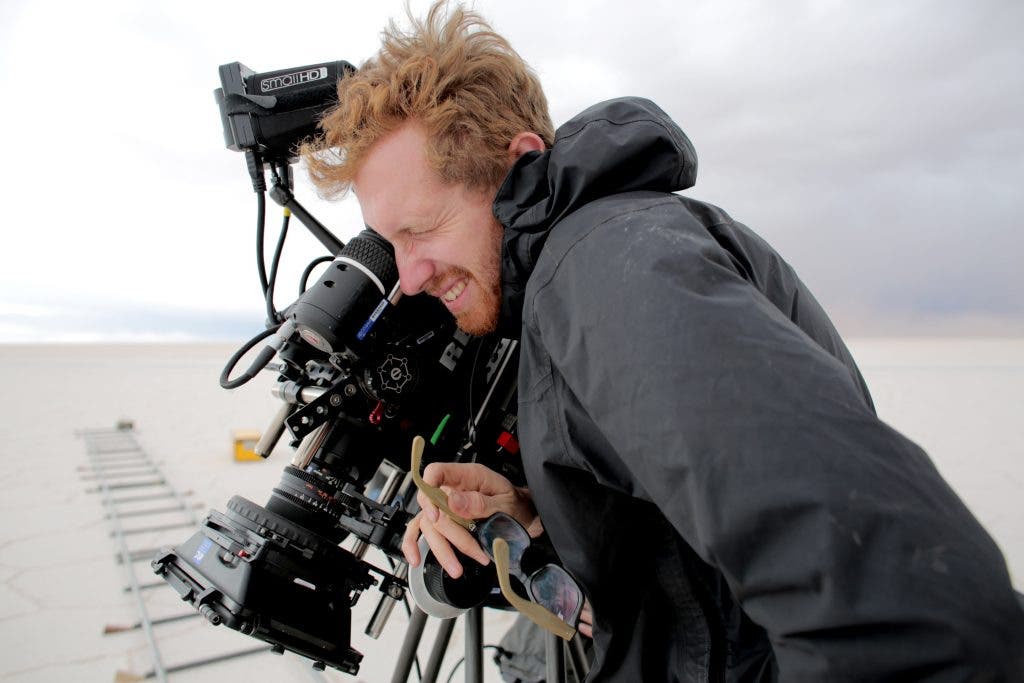
We recently had the pleasure of speaking with cinematographer Andrew David Watson about his incredible documentary, Salero, a film which transports viewers on a poetic journey told through the eyes of Bolivian “salero,” Moises. Moises is one of generations of saleros who harves salt from the radient salt flat of Bolivia’s Salar de Uyuni. The secluded region is the earth’s largest salt flat, and the film explores how the saleros are being “thrust into the future,” due to the Bolivian government’s plans to implement new infrastructures to extract a precious mineral from the Salar.
https://vimeo.com/146051605
Adorama: The aerial footage is stunning! How did you manage to capture this?
AW: The director, Mike Plunkett, actually shot this on his pick-up shoot via a small plane.
Adorama: How many years went into pre-production and shooting, and had you planned for such a long-term project?
AW: I knew from the start Salero would be a multi-year project. Documentary features always seem to take longer than excepted, but I was committed from the start to see the project through to the end. From a visual perspective, we were lucky to start this project on RED. At the time there were no other cinema cameras to use on the project. The 5D did not exist yet, and other options such as the brand new Alexa were too expensive to use for months at a time. We started on the RED ONE, shot some on the Scarlet and then finished the project on the RED EPIC. By sticking to the RED format, we were able to keep a continuous look to the film. Despite the film being shot over a 4-year span, it all merges together as one visual journey. This continuity is what i”m most proud of on the project, as it’s hard to achieve on years-long projects.
Adorama: What were logistics of shooting in such a remote location and what would you do differently considering the challenging shooting situations you found yourself in?
AW: When we first started the project there was no airport on the Salar, so we were a two-day drive from the closest source of camera or grip gear in La Paz. We had to plan very carefully to make sure we had everything we needed, and backups of anything that could go down. On earlier trips we took two RED ONE camera bodies, just so we had a backup. Adorama was awesome in helping use secure back-up RED viewfinder cables, power cables, and other crucial hardware.
On later trips, we took a RED EPIC as A camera, and a PL mount C300 as our backup camera. Considering the project took multiple trips and years, we were able to adjust as we went and honed the camera package along the way. I kept a notebook with me, and would jot down notes for future trips, whether it was an extra ND filter or racket straps. By trips 3 and 4, I felt like we really had everything dialed in.
The shooting conditions, on the other hand, we had no control over. Wind, dust and salt were always a challenge. On top of that, we were working at 13,000+ ft, which was physically exhausting but also exhilarating. I give great credit to my AC (Nick Lindner and Greta Zozula) for keeping the packages up and running despite harsh conditions.
Adorama: The film is very stylized, a visual poem, yet as it is a documentary, how does one approach pre-planning and storyboarding on a project like this?
AW: During pre-production, Mike and I would have long discussions about scenes we wanted to shoot. We never storyboarded scenes, but Mike did extensive shot lists and breakdowns. Mike and I hit it off right away and worked together extremely well. Mike often knew the exact shot he wanted, but was also open to ideas and would let me shoot scenes how I wanted as well. I think the effortlessness to the process really allowed us to cover scenes creatively and quickly. At the end, we were able to execute a lot of the ideas we talked about in pre-production, including a long, one-take dolly move at the local airport, while a plane was landing. The film really does look exactly as Mike and I pictured it.











